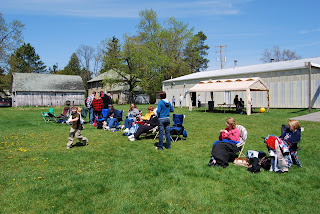
This is a regular blog post. Please check out the other posts if you’re looking for show notes or episode audio.
Got some tailwheel time this afternoon at Sutton Aviation with Barry Sutton in a Citabria. I had been reading the materials that Dan Gryder provides and saw something to the effect that “if you can taxi the DC-3, you can probably fly it.” So I reconsidered the wisdom of flying the DC-3 while having had no previous tailwheel time. Taxiing or otherwise.
We flew a really nice Citabria, namely N157AC. Two high-speed taxi runs down 27L at Pontiac with Barry handling the stick and throttle and me on the rudder. Then eight takeoffs and landings for a total of 1.4 hours. All were wheel landings, with the idea being that you always do a wheel landing in the ‘three and it would be good to get an idea of what wheel landings are like and have an understanding of the forces involved. Obviously, the ‘three is going to be a lot heavier and more steady, but it’s still a tailwheel aircraft.
That’s Barry Sutton in the back. Thousands of hours in tailwheels and other aircraft. And a great manner as an instructor. I think he out-John-Kings John King. And, when you’re in a tandem configuration with the instructor behind you, it’s like you have this disembodied announcer voice coming from the sky that occasionally moves the controls, too.
Actually, it might be fun to just have the instructor be the voice of the airplane. “Hey, that hurt! Could you maybe point me down the runway now?”
I’ll post audio from this ride as soon as I can. Probably after the daily updates from the ‘three training May 23-25. But it’ll be fun. The tower was really chatty and it was a fun day to be in the pattern.
More information on Sutton Information:
Sutton Aviation, Inc.
Oakland County International Airport
6230 North Service Drive, Waterford, MI, 48327
248-666-9160









